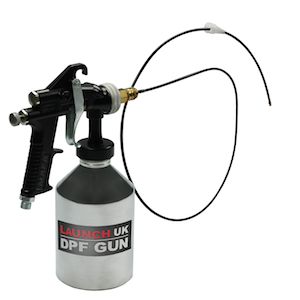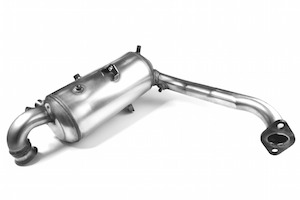
With CO2 emissions on the rise, how are suppliers preparing workshops accordingly?
unless you have your head in the sand, you’ll notice that the tide has turned for emissions and for light diesels in particular. Last month, almost anything registered before 2005 was effectively banned from central London, thanks to the so-called Toxicity Charge. What’s more, these standards are only likely to get tougher, with a diesel emissions check at MOT among many options being mooted by those in power. This isn’t necessarily a bad thing: Everyone wants fresh air and there are a number of products to help clean up diesel engines.
One technology that has kept VMs in line with their objective is Exhaust Gas Temperature Sensors (EGTS), designed to protect components exposed to hot exhaust gases from overheating. Julian Goulding, UK Marketing Manager at Delphi elaborates, “Exhaust gas temperature sensors play a crucial part in modern vehicles. From Euro 5b, all diesel vehicles had to have EGTS, with each car having up to six sensors, they’ll become an increasingly important service item.” He adds that these parts can and do fail, which is hardly surprising given the hellish temperatures that they endure. However, an EGTS problem is often misdiagnosed.
TRAINING AND WEB PLATFORMS
To counter this, Goulding suggests workshops can enrol onto a number of training courses in order to repair these systems confidently. Based at its Warwick Centre, the parts maker hosts various programmes, with training that can also be accessed via its’ digital channels; which provides information on fitting sensors and diagnosing faults successfully. Helen Goldingay, UK Marketing and Communications Manager at Hella, concurs, stating that although most garages are up-to-speed with EGTS, attention on newer technology must be brought to the forefront. She expands, “Due to the growth in use of the micro hybrid (start-stop) systems, intelligent battery sensors, which play a crucial in the battery management function that are part and parcel of the system, are clearly a growth area, as are those directly connected with emission controls, like exhaust gas pressure and air quality sensors.
‘Technicians are aware of the growth in the number of sensors that modern vehicles require, but what is more important than actually knowing every sensor itself, is the ability to identify where a fault lies and have the equipment to reinstate the management system once the component has been changed.” To facilitate this, various web platforms have been launched by the company in recent years. This includes Tech World for technicians as well as Partner World for factors and others in the supply chain.
CLEANING AND TESTING
It’s all well and good being able to diagnose faults with these parts, however, carbon build-up on EGR valves, DPF’s and injectors can restrict sensors from detecting problems within the fuel and exhaust system. Carbon build- up or post combustion carbon as it’s otherwise known, is a result of vehicles running in conditions where they can’t reach their full temperature; resulting in heavy quantities of carbon being burnt.
Fortunately, the aftermarket isn’t starved of chemical products to help with this. Various potions that are poured in the fuel or in the crankcase, as well as several machines have come onto the market in recent years. One of the most recent entrants in this sector comes from diagnostic equipment supplier Launch UK. The company has recently launched a device called a DPF Gun as well as various pour-in chemical cleaning products. Richard Collyer, Product and Equipment Specialist at the firm, expands, “Once vehicles are full of carbon, the EGR valve can’t operate properly and can blow electronically. Once this occurs, it will need changing.”

FACING FEARS
Akin to this, Mark Blinston Commercial Director at UK manufacturer BM Catalysts, encourages independents to get involved in servicing DPFs themselves, instead of dismantling and sending them off to dealers, which he says can be a ‘costly move’ for the garage. However, there is still a ‘fear’ around this technology that he brings to light, “The general perception is that garages are worried that if they get it wrong, it will be expensive”, he continued, “There’s been a lot of noise about this in the news where the BBC recently done a report revealing a shocking number of vehicles being driven on roads that are not fitted with them. This is one reason why some garages aren’t getting involved.”
To face this fear head on, Blinston explains that the firm has produced some point- of-sale material, training sessions and technical information for technicians. This also goes along with a number of new offerings for its’ core lines of catalytic converters, pressure pipes and DPFs. He concluded, “We have invested in many resources and developments over the last year by adding 245 new part numbers in 2017 covering 30 million vehicles across Europe.”











Go to comments